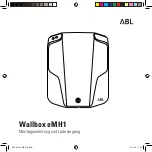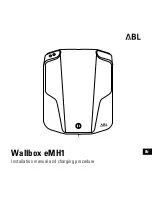
24
Body Builder Manual Part II, Specific Book LCV
V1.0, February 2015
INTRODUCTION
PRELIMINAR STUDIES AND CONSIDERATIONS
MAINTENANCE AND DAMAGE PREVENTION
WORK ON BASIC VEHICLE
MOUNTING AND CONSTRUCTION
POWER TAKE-OFF
ELECTRIC AND ELECTRONIC SYSTEMS
APPENDIX
In addition to the limits established by law, every vehicle model has its own limits in
size and in the type of body that can be mounted. Thus:
The overall width of the vehicle is limited by:
- Type of headlamps installed as standard, which should comply with the
standard regarding the installation of lighting and light-signaling devices. (ECE
Regulation No. 48).
Table 1-19 LCV_SPBTC23_005 Maximum vehicle width depending on headlamps
Type of exterior mirrors installed as standard, which should comply with the
standard regarding devices for indirect vision. (ECE Regulation R 46)
Table 1-20 LCV_SPBTC23_006 Vehicle width depending on exterior mirrors
Because of these restrictions, the maximum vehicle width reached is normally
2,190 mm.
To get more information about optional equipment supplied by HMC, such as mirrors
with long stays or projection type headlamp:
See General Book, chapter 2.4 "Contact Possibilities".
The maximum height of the vehicle will be limited by:
- Maximum allowable position of the centre of gravity.
See chapter 2.3.4 "Centre of Gravity (CoG)".
MAXIMUM VEHICLE WIDTH DEPENDING ON HEADLAMPS
Standard headlamp (MFR type)
2,235 mm
Optional headlamp (projection type)
2,374 mm
VEHICLE WIDTH DEPENDING ON EXTERIOR MIRRORS
Standard mirrors
≤ 2,190 mm
Optional headlamp (projection type)
2,190 mm to 2,340 mm
















































